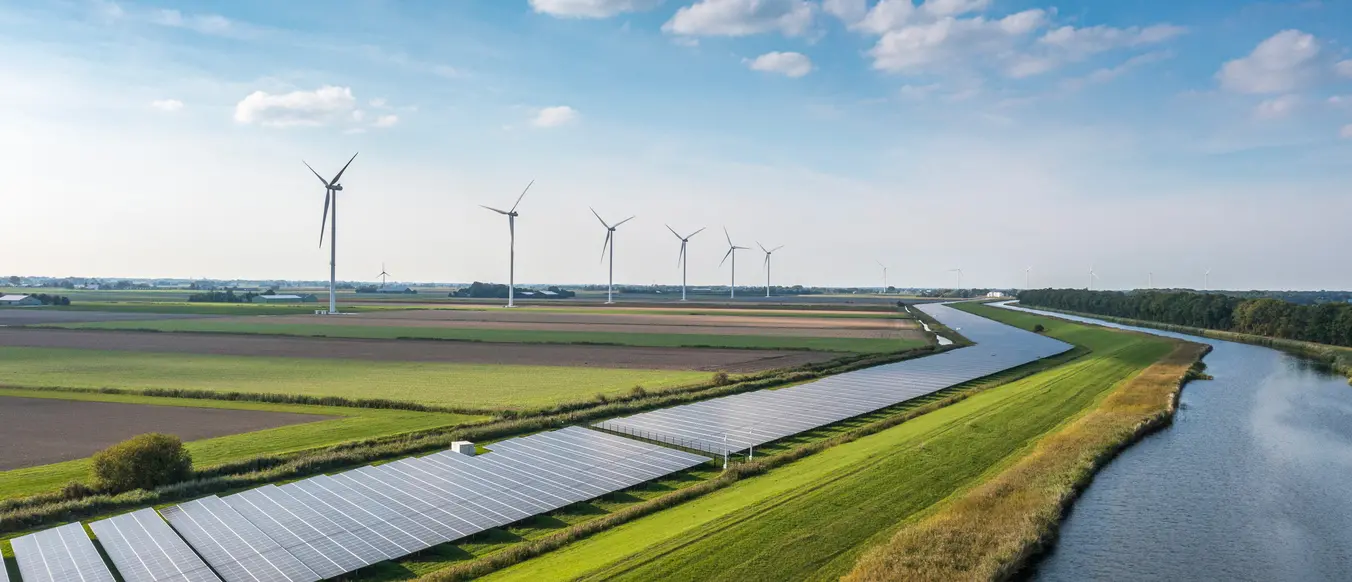The benefits of decarbonization: Why sustainability is a smart business strategy

Sustainability has been a dominant theme in business strategy for over a decade, but today, the conversation is evolving. Businesses are re-evaluating how to approach decarbonization—not just as a moral imperative, but as a practical lever for efficiency, resilience, and long-term value.
At World Kinect, we work with organizations to translate climate goals into measurable outcomes. We believe that decarbonization, when approached strategically, can deliver tangible business benefits—from cost savings to risk reduction—without overpromising or oversimplifying the path forward.
In this blog we’ll explore some of the key benefits of decarbonization as well as some practical guidance on how to measure the ROI of your carbon reduction efforts.
7 key benefits of decarbonization
Energy cost savings
Investing in energy-efficient technologies, such as LED lighting and smart building systems as well as generating renewable energy onsite, can significantly cut utility bills. While savings vary by sector and scale, many organizations see measurable reductions in energy expenditure.
Enhanced access to capital
Clear decarbonization strategies can support stronger risk management and demonstrate long-term planning—factors that some investors and lenders consider in their decision-making. This may contribute to improved access to capital or alignment with ESG-focused financial products, depending on the market and investor priorities.
Stronger brand reputation and market differentiation
Many stakeholders including consumers, employees, partners, and regulators, continue to value credible climate action. Demonstrating progress on decarbonization can support trust and alignment with these groups, even if it’s not a primary driver of customer behavior.
Innovation and new revenue opportunities
Efforts to reduce emissions often lead businesses to rethink processes, products, and services. This can uncover opportunities for innovation—such as more efficient operations, new offerings, or partnerships—that support long-term competitiveness.
Risk mitigation and regulatory readiness
Reducing dependence on fossil fuels helps mitigate exposure to volatile energy prices and enhances preparedness for evolving environmental regulations. It also supports compliance efforts, helping businesses avoid fines, carbon taxes, and reputational damage.
Operational efficiency
Decarbonization initiatives often go hand-in-hand with efforts to improve efficiency—such as reducing waste, optimizing resource use, or upgrading equipment. These changes can contribute to better operational performance and cost control.
Long-term resilience
As climate-related risks become more visible, businesses that invest in decarbonization may be better positioned to adapt to changing conditions. While not a guarantee, these efforts can support long-term resilience by reducing exposure to environmental and supply chain disruptions.
How to measure the benefits of decarbonization
To fully realize and communicate the benefits of decarbonization, organizations need a clear measurement framework:
Measure emissions and establish your baseline:
Before you can manage or reduce emissions, you need to understand where they’re coming from. This involves conducting a greenhouse gas (GHG) inventory, often supported by a carbon accounting platform, to quantify emissions across Scope 1 (direct), Scope 2 (indirect from purchased energy), and Scope 3 (indirect from the value chain). Tools like the GHG Protocol provide standardized methodologies. Establishing this baseline is critical—it serves as the reference point for setting goals and tracking progress.
Set a strategy with clear goals and action plans:
Once you know your emissions profile, the next step is to define your decarbonization strategy. This includes setting targets aligned with frameworks that are most suited to your organisation’s sustainability objectives, identifying priority areas (such as energy use, transportation, or supply chain), and outlining specific actions. A good strategy balances ambition with feasibility and includes timelines, accountability structures, and performance indicators.
Calculate initial investment:
Implementing decarbonization measures often requires capital investment—whether it’s for energy-efficient equipment, renewable energy installations, or process redesign. This step involves estimating the total cost of these initiatives, including technology, labor, training, and potential downtime. It’s important to consider both CapEx (capital expenditures) and OpEx (operational expenditures) to get a full picture.
Estimate ongoing savings:
This is where the business case becomes clear. Decarbonization can lead to significant savings through reduced energy bills, lower maintenance costs, improved process efficiency, and even tax benefits. Additionally, intangible benefits—like enhanced brand value or reduced regulatory risk—can translate into long-term financial gains. Use historical data, industry benchmarks, and pilot project results to estimate these savings.
Evaluate the return on investment:
Finally, calculate the ROI by comparing the cumulative savings and risk reductions to the initial investment. This can be done using standard financial metrics like Net Present Value (NPV), Internal Rate of Return (IRR), or simple payback period. A positive ROI not only justifies the investment but also strengthens the case for scaling up decarbonization efforts across the organization.
Decarbonization is a smart, strategic response to the challenges and opportunities facing businesses today. When grounded in data and aligned with broader goals, it can unlock meaningful benefits: lower costs, greater efficiency, reduced risk, and improved resilience.
In a world where expectations are shifting and resources are under pressure, businesses that take a measured, proactive approach to carbon reduction are better positioned to adapt and thrive. At World Kinect, we help organizations turn sustainability from a concept into a competitive advantage—one step, one decision, and one result at a time.
